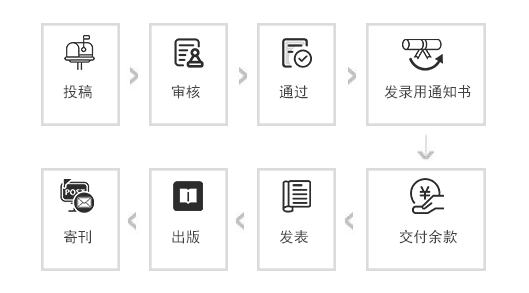Visual Communication



- 中国知网数据库(CNKI)全文收录期刊
- 中国核心期刊(遴选)数据库收录期刊
- 中国万方数据库全文收录期刊
- 中国维普科技期刊数据库收录期刊
- 中国龙源数据库全文收录期刊
- 中国期刊网全文收录期刊



中国高校科技期刊研究会第9次会员代表大会在北京召开,中宣部出版局副局长张怀海、教育部科学技术与信息化司一级巡视员张国辉等领导出席会议并发表..
英文简介:Visual Communication will publish four kinds of papers: (1) Research papers which advance theory, method, and empirical analysis in one or more of the following areas (5000-7000 words): The structures and histories of the semiotic resources and technologies of visual communication, and their relation to other modes of communication. The use of these resources and technologies in visual and multimodal genres, texts, communicative events, artefacts, and performances, including but not restricted to, education, media, health, science, organizations, and personal contexts. (2) Reflective papers by practitioners of visual communication which document current and emerging practices and trends in all areas of visual communication, whether from a critical perspective or with a view to exploring the expansion of the resources of visual communication and their uses (maximum 4000 words) (3) Visual essays in any of the above areas which make their argument predominantly through visual communication (maximally 12 pages). (4) Presentations of critical reviews of freely-available tools for analyzing, creating, or manipulating data/examples of visual communication (maximum 4000 words). All contributions should engage closely with examples of visual communication, and/or examples of the visual relation to other semiotic modes. All contributions should be of interest to a broad multidisciplinary readership in the humanities, social sciences and design professions, and written in a style that is accessible to this readership.中文简介:(来自Google、百度翻译)视觉传播将出版四种论文: (1)在以下一个或多个领域(5000-7000字)提出理论、方法和实证分析的研究论文: 视觉传达的符号资源和技术的结构和历史,以及它们与其他传播方式的关系。 这些资源和技术在视觉和多式体裁、文本、交流活动、文物和表演中的使用,包括但不限于教育、媒体、卫生、科学、组织和个人背景。 (2)视觉传播从业人员的反思性论文,记录了当前和新兴的视觉传播领域的实践和趋势,无论是从批评的角度还是为了探索视觉传播资源及其用途的扩展(最多4000字) (3)上述任何一个领域的视觉文章,主要通过视觉交流(最多12页)。 (4)对免费提供的分析、创建或操作数据的工具/可视通信示例(最多4000字)进行关键审查的演示。 所有的贡献都应该与视觉交流的例子和/或与其他符号学模式的视觉关系的例子密切相关。 所有的贡献都应该引起人文、社会科学和设计专业广泛的多学科读者的兴趣,并以读者能够理解的风格书写。










英文简介:Visual Communication will publish four kinds of papers: (1) Research papers which advance theory, method, and empirical analysis in one or more of the following areas (5000-7000 words): The structures and histories of the semiotic resources and technologies of visual communication, and their relation to other modes of communication. The use of these resources and technologies in visual and multimodal genres, texts, communicative events, artefacts, and performances, including but not restricted to, education, media, health, science, organizations, and personal contexts. (2) Reflective papers by practitioners of visual communication which document current and emerging practices and trends in all areas of visual communication, whether from a critical perspective or with a view to exploring the expansion of the resources of visual communication and their uses (maximum 4000 words) (3) Visual essays in any of the above areas which make their argument predominantly through visual communication (maximally 12 pages). (4) Presentations of critical reviews of freely-available tools for analyzing, creating, or manipulating data/examples of visual communication (maximum 4000 words). All contributions should engage closely with examples of visual communication, and/or examples of the visual relation to other semiotic modes. All contributions should be of interest to a broad multidisciplinary readership in the humanities, social sciences and design professions, and written in a style that is accessible to this readership.中文简介:(来自Google、百度翻译)视觉传播将出版四种论文: (1)在以下一个或多个领域(5000-7000字)提出理论、方法和实证分析的研究论文: 视觉传达的符号资源和技术的结构和历史,以及它们与其他传播方式的关系。 这些资源和技术在视觉和多式体裁、文本、交流活动、文物和表演中的使用,包括但不限于教育、媒体、卫生、科学、组织和个人背景。 (2)视觉传播从业人员的反思性论文,记录了当前和新兴的视觉传播领域的实践和趋势,无论是从批评的角度还是为了探索视觉传播资源及其用途的扩展(最多4000字) (3)上述任何一个领域的视觉文章,主要通过视觉交流(最多12页)。 (4)对免费提供的分析、创建或操作数据的工具/可视通信示例(最多4000字)进行关键审查的演示。 所有的贡献都应该与视觉交流的例子和/或与其他符号学模式的视觉关系的例子密切相关。 所有的贡献都应该引起人文、社会科学和设计专业广泛的多学科读者的兴趣,并以读者能够理解的风格书写。
来稿要求:
论点新颖、论证严密、论据充足、文字精练。论文字数:5000字符-8000字符为宜,图表也要计算在内,不包括英文摘要关键词。
标 题:
文章标题要言简意赅,30字以内。作者署名:署真实姓名,注明作者单位、单位所在省市和邮政编码。摘 要:要用第三人称概括全文,300字以内。
关 键 词:
用3~8个关键词术语反映论文主题。专用符号:名词、术语、数字、计量单位、标点符号和数学符号等,必须符合国家标准;外文人名、地名和术语需译成中文。
图表格式:
文中插图与表格放在相应正文之后,分别按出现顺序用图1、图2或表1、表2统一编号。插图应为黑白色,其序号、标题及注释居中放在图的下方,表格的序号及标题置于表格上方,表注放在表格的下方(建议:由于篇幅限制,除核心期刊外尽量不用或少用图表)。
正文注释:
采用尾注形式,注释号①,②,③等标在相应正文右上角。
章节体例:
章节标题为:一级标题不编号,用黑体居中排,二级标题不编号,用楷体放在相应的文字段首与正文空一字格接排正文。 三级标题分别用1.2.3.顺序编号。文中接排标题用(1),(2)编号。
参考文献:
参考文献置于正文之后,近5年的不少于3条,用[1],[2]……顺序编号,如文章中有内容需要解释请用尾注形式。参考文献不全者不能进入审稿阶段。{参考文献格式如下:(1)图书:作者.书名(版本)[M].出版所在地: 出版社,出版年:(1)页码.
(2)期刊:作者.题目[J].期刊名,年,卷(期):页码.
(3)电子参考文献:作者.题目[OL].(文章的发表日期).[本文引用日期].作者简介:来稿者请附个人简介,内容包括姓名(出生年—),性别,籍贯,民族,学历,工作单位,职称,研究方向,通讯地址,联系电话及电子信箱。
一般情况下,您将在3个工作日内收到审稿结果。如文章有很强的时效性,请说明需要最晚刊发时间。
| 论文编号 | 作者姓名 | 论文题目 | 录用情况 |
|---|---|---|---|
| TG251-13579 | 韩丽炘 孟涛 温娟娟 刘晓琴 | 基于互联网的CBL+TBL教学法在病理学实验教学中的应用 | 已录用 |
| TG251-13681 | 邹隆强 杨清余 钟鸿路 李正南 陈 | 医学运动康复联合消肿止痛方治疗急性踝关节扭伤临床研究 | 已录用 |
| TG251-13794 | 林雨慧 陈霄雯 郑颖彦 朱永凯 贾 | 基于SWOT模型的儿童专科医院临床研究发展策略分析 | 已录用 |
| TG251-13762 | 郑鸿雁 | 重复经颅磁刺激治疗肝脾不调型功能性肛门直肠痛的临床研究 | 已录用 |
| TG251-13891 | 袁召1 赵会谢2 赵海深3 | 真武汤治疗阳虚水泛型慢性心力衰竭患者的临床研究 | 已录用 |
| TG251-13536 | 王杰1 张蕾蕾2 | 血脂和载脂蛋白水平与分化型甲状腺癌及其病理学特征的相关性探究 | 已录用 |
| GD24-5203 | 单一青 高鹏慧 姚瑶 | 思维导图护理对宫颈癌患者行腹腔镜术后康复的影响 | 已录用 |
| GD24-5217 | 林秀娟 梁静文 刘美仙 陈惠贤 | 加速康复外科管理模式在胸腔镜肺段切除术患者围手术期护理中的应用效果 | 已录用 |
| GD24-5213 | 杨素雯 何洁芳 陈妙霞 廖景升 | 健康行为改变整合理论对于宫颈癌晚期放疗患者依从性及自我效能的影响 | 已录用 |
| GD24-5199 | 杨月惠 王凤婷 | 个体护理计划在心脏瓣膜置换手术围手术期患者中的应用 | 已录用 |
邮箱:cnkibianjibu@163.com
QQ:
扫码联系: